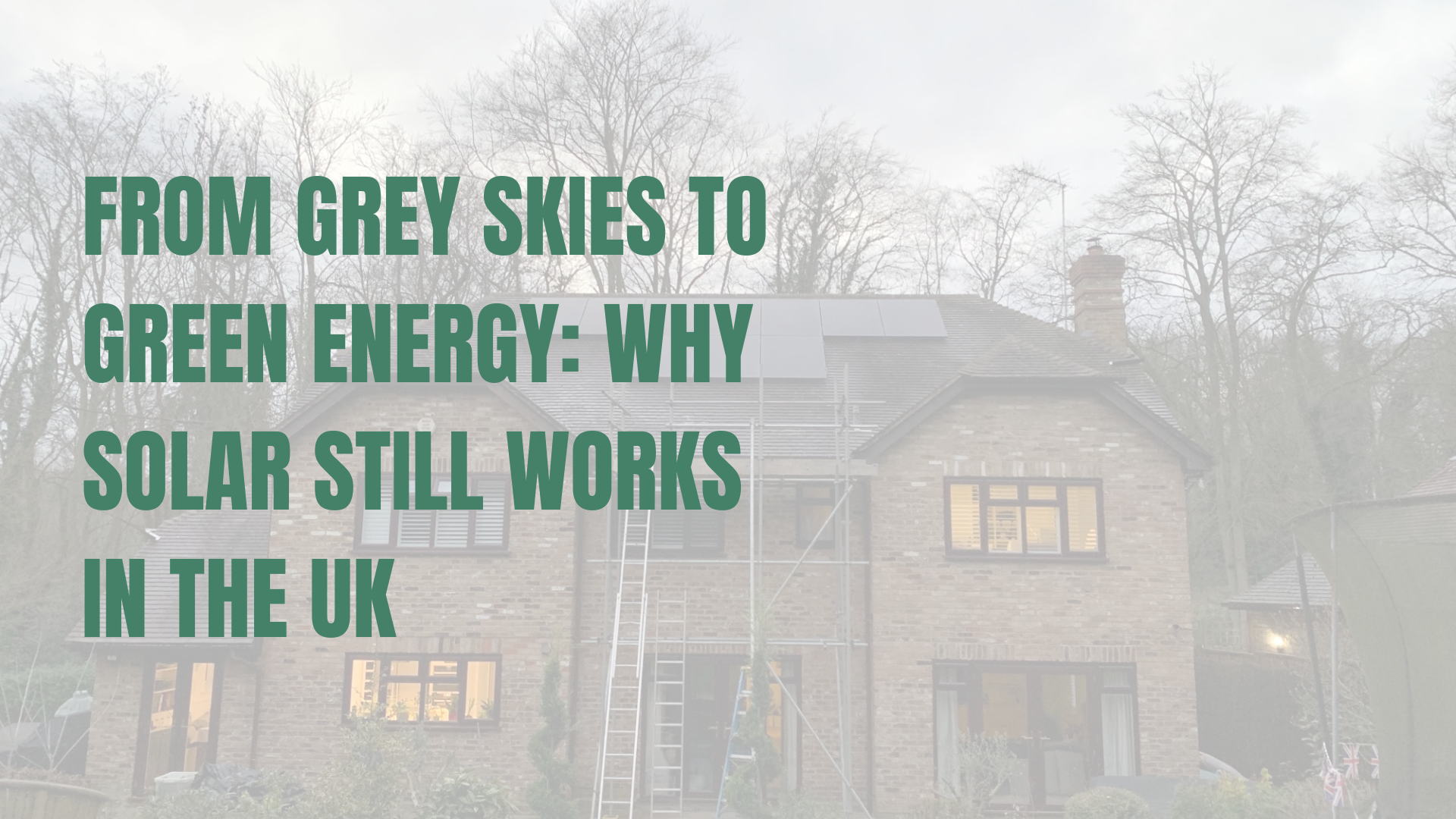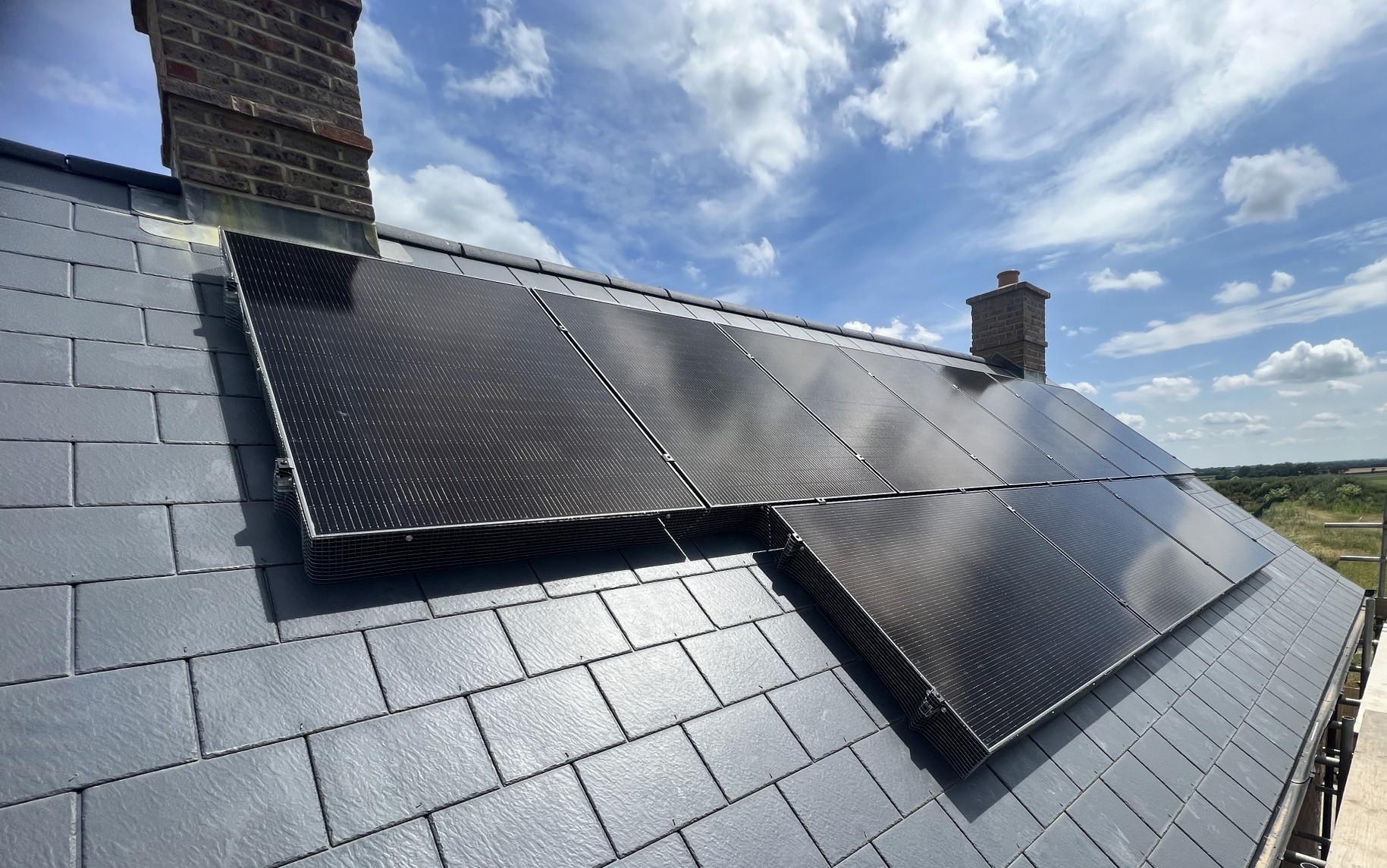If you’ve ever heard (or said) “we don’t get enough sun for solar in the UK”, you’re not along. It’s the most common objection we hear at SolarTherm UK, and it’s also the easiest to fact check. Modern solar panels don’t need Mediterranean sunshine, they just need daylight, whether that’s the sun clear in the sky or the sun’s irradiance from behind the clouds.
This article will unpack the facts, the figures and what they mean for your roof and your bills.
Myth vs Reality: “We Don’t Get Enough Sun”
Reality: The South East gets over 1,600 hours of sunlight a year. A 4kWp solar array often produces around 3,400-3,800 kWh per year, enough to cover a substantial portion of a typical home’s electricity needs.
Solar panels generate power from daylight, not heat. Diffused light on overcast days still produces electricity and modern solar panels are designed to be efficient in low light conditions. That’s why solar continues to grow in the UK – because it works here.
What the National Numbers Say
- In 2024, solar supplied roughly 5% of the UK’s annual electricity. In 2025 throughout a record breaking sunny spring and summer it has covered over 30% of Britain’s demand at times.
- By September 2025, the UK hit a record 54.5% renewables share, underscoring how fast clean power, including solar is scaling.
- By mid-August 2025, Britain’s year to date solar output had already surpassed all of 2024, reflecting both more capacity on roofs and fields and a particularly sunny start to the year.
But What About Winter?
Ok, so solar generation is seasonal, you’ll generate more electricity from April-September than your will in October-March. UK sunshine patterns show a predictable annual cycle (spring/summer brighter; winter darker) but panels still produce on short, cloudy days, just less. Smart usage and batteries help you capture and shift what you make to when you need it.
In spring and summer, solar homeowners will maximise daytime self-consumption, using smart timers and plugs to operate high energy usage appliances, charging their EVs and using a solar diverter to pre-heat water for showers and baths, any surplus electricity can be exported back to the grid for payment through the Smart Export Guarantee (SEG). In winter, when solar generation is lower, let your battery and smart controls extend your solar into the evenings, topping up with cheap over night electricity if you’re on a time of use tariff.
The Economics: Lower Bills and Paid for Your Surplus
Even without the old Feed-in Tariff, UK households can still benefit from payment for exported surplus electricity. The Smart Export Guarantee (SEG) ensures suppliers pay you for any electricity you export back to the grid, rates and terms will vary by supplier and you may need to shop around for the best rates.
Combine SEG income with bill savings from self consumption and the case for solar in the UK becomes clear, even before you consider long term energy price rises and volatility.
“Isn’t the UK Weather Getting Cloudier?” (Actually…We’ve Had Record Sun)
Weather varies year on year, but recent seasons have seen sunshine records broken, including England’s sunniest March on record and the UK’s sunniest spring on record, both broken in 2025. More sun is not a guarantee every year, but it illustrates why nationwide solar output has been smashing records.
Why Solar Keeps Growing in the UK
- Proven at scale: millions of British rooftops and businesses have already installed solar, residential solar systems accounted for approximately 68% of new solar installations in April 2025.
- Technology gains: modern solar panels are more efficient and perform better in low light than a decade ago. Solar systems are also more compatible with smart technology than ever before.
- Policy and grid progress: the UK government targets an increase in capacity by 2030, grid upgrades and batteries are accelerating integration. The government aims to have 9 million rooftop solar installations by 2030.
- Affordability: the cost of solar has decreased by over 80% in the last decade, making it more affordable for homeowners.
How to Maximise Your Solar
- Roof first: south facing is most ideal, however east/west split arrays can still deliver strong annual generation.
- Mind the shade: even partial shading can affect output, microinverters or power optimisers can help overcome any shading issues.
- Add a battery: store daytime surplus generation for use in the evenings and use time of use tariffs to charge your battery on a cheaper rate.
- Use your energy smartly: shift flexible loads into sunny hours using smart timers and plugs.
- Export what you don’t use: pick a SEG tariff that fits your pattern and works optimally for your solar system.
The Bottom Line
The UK absolutely does get enough sun for solar to make sense, and the grid level data proves it. With realistic yields of approximately 950kWh per kWp per year, meaningful bill savings and export payments for your surplus, solar is one of the most robust home upgrades you can make.
Ready to Start Your Solar Journey?
SolarTherm UK can model your roof, estimate your annual kWh, design for maximum self consumption and recommend the right battery and SEG setup for your home.
Contact SolarTherm UK for your free, no obligation quote and design, tailored to your property, usage and future energy needs. No hard sell, just honest, expert advice.
Your home. Your energy. Your future.





